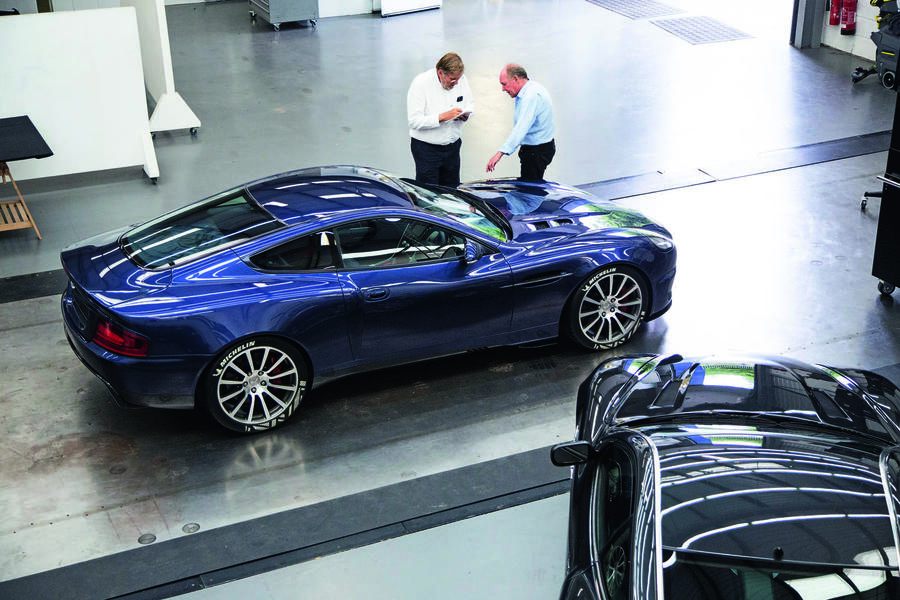“There are things on the car I’ve always wanted to fix,” he said. “Now I have the chance.”
One strong theme running through the whole car is a unique fabric and trim pattern that Ian Callum, a loyal Scot, calls his “abstract tartan”. It appears in the Vanquish in surprising places, such as air outlets and speaker grilles, as well as seating and trim panels and will be used on Callum cars in future.
The partners at Callum have already built two Vanquish prototypes, one to show off their body and cabin developments and another to perfect a new suspension set-up that runs to bigger wheels and tyres, stiffer springs and dampers plus changes to anti-roll bars and suspension bushes.
All cars also get larger-diameter carbon-ceramic brakes plus new 20in wheels that use the Vanquish’s original pattern but are now offset to improve stability and stance.
Each V12 engine gets software, camshaft and exhaust changes to boost its power by around 60bhp to between 500bhp and 600bhp, depending on the model. A modern six-speed torque-converter automatic is offered, although many owners are expected to stick with the Vanquish’s original automated manual gearbox.

Ian Callum’s “new old” Aston is still very recognisable as an original Vanquish but has many modern details. There’s a new-style front bumper and grille, the latter subtly framed with carbonfibre and its horizontal bars most prominent. The lights are new LED units and the old, round foglights (Callum calls them “frog eyes”) are dropped in favour of air scoops for the bigger front brakes. There are new-design exterior mirrors (“we’ve dropped the old boxing gloves”) plus handsome side skirts incorporating a four-notch design that will become a feature of future Callum cars.
The exhaust’s back box has been reduced in size and incorporated into the rear bumper assembly to improve the efficiency of the rear diffuser and the car gets new LED tail-lights, an unusual and expensive feature (but necessary, Ian Callum insists).
More subtle improvements abound. Special Michelin tyres carry the Callum tartan on their sidewalls. The side windows are framed with specially fabricated trim pieces (not the Jaguar cast-offs of the original). The interior is completely retrimmed over new architecture, with the emphasis on high-quality materials and execution. The new front seats adopt a more sporting profile and the tiny rear seats have been ditched in favour of better accommodation for those in the front. There’s a new screen-based HMI and a demountable Bremont watch is fitted into the centre of every fascia.